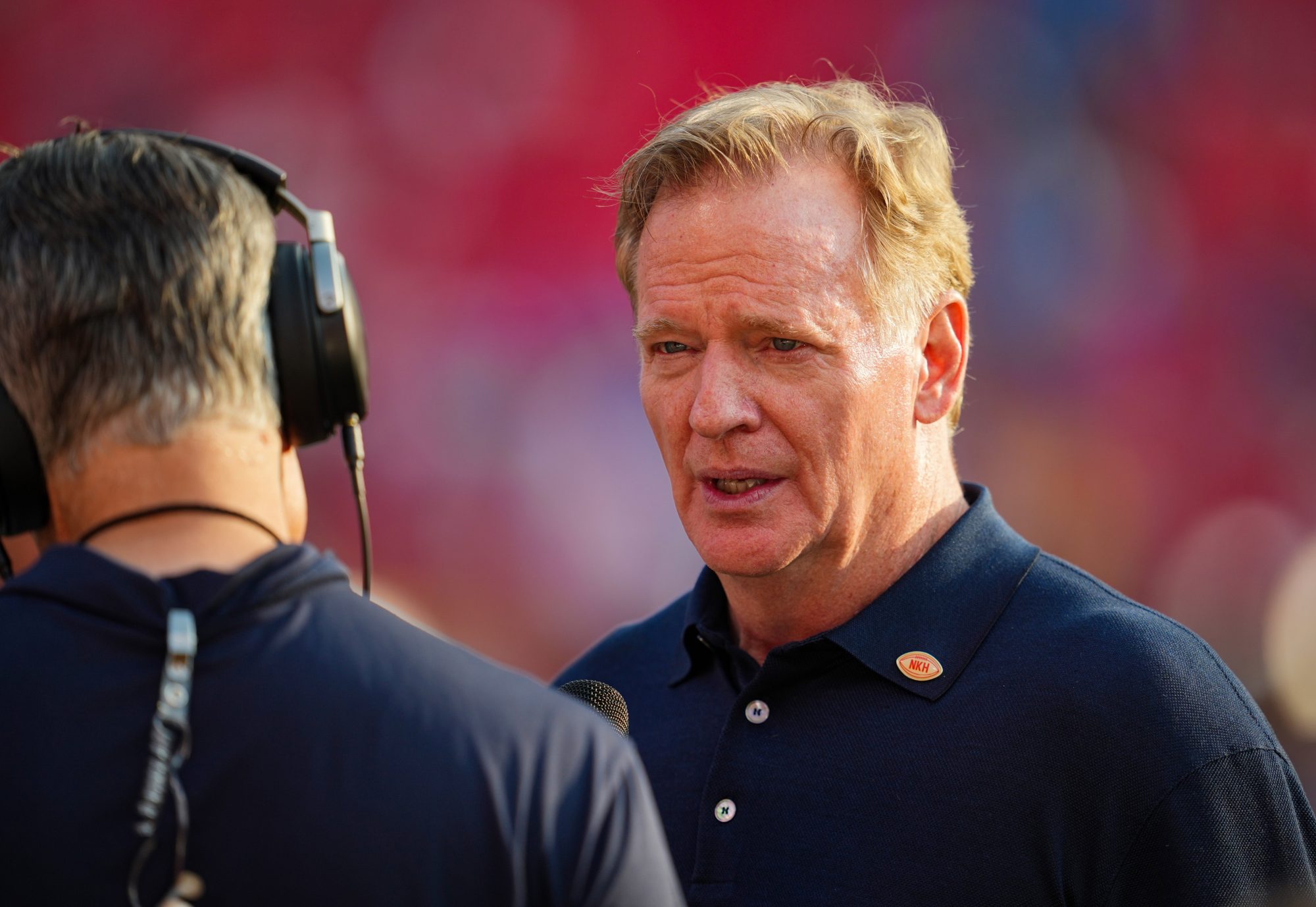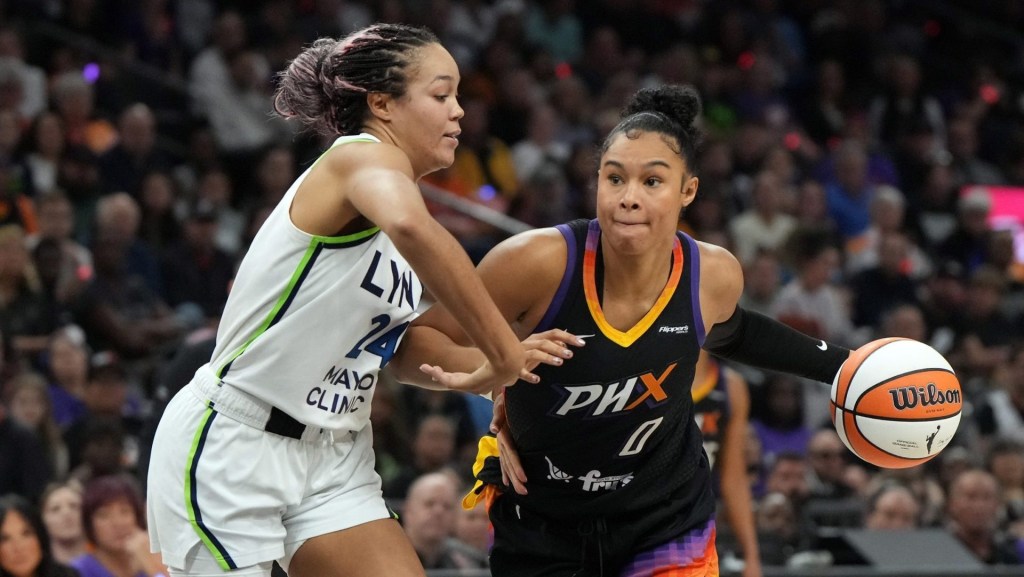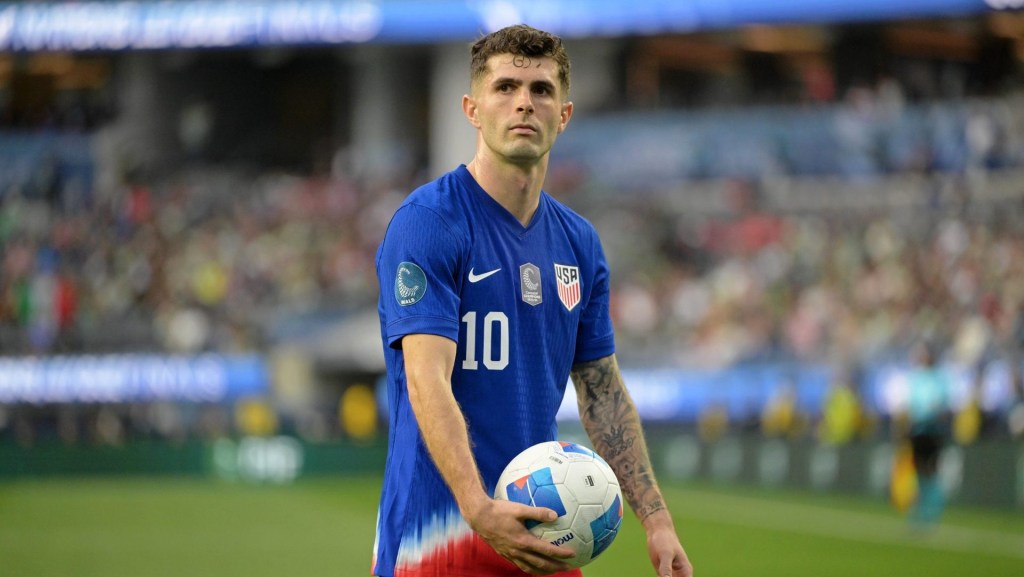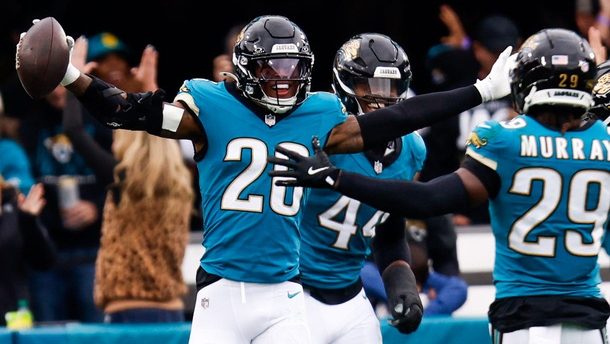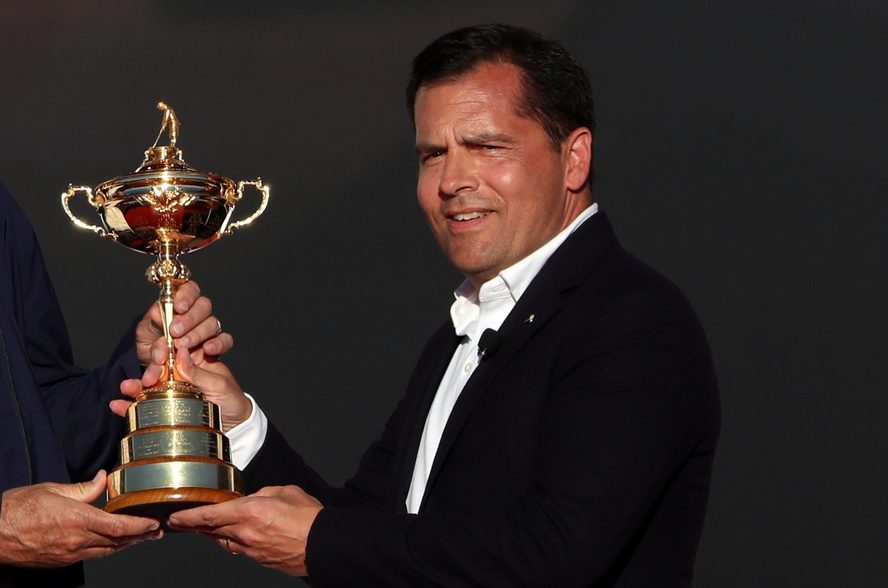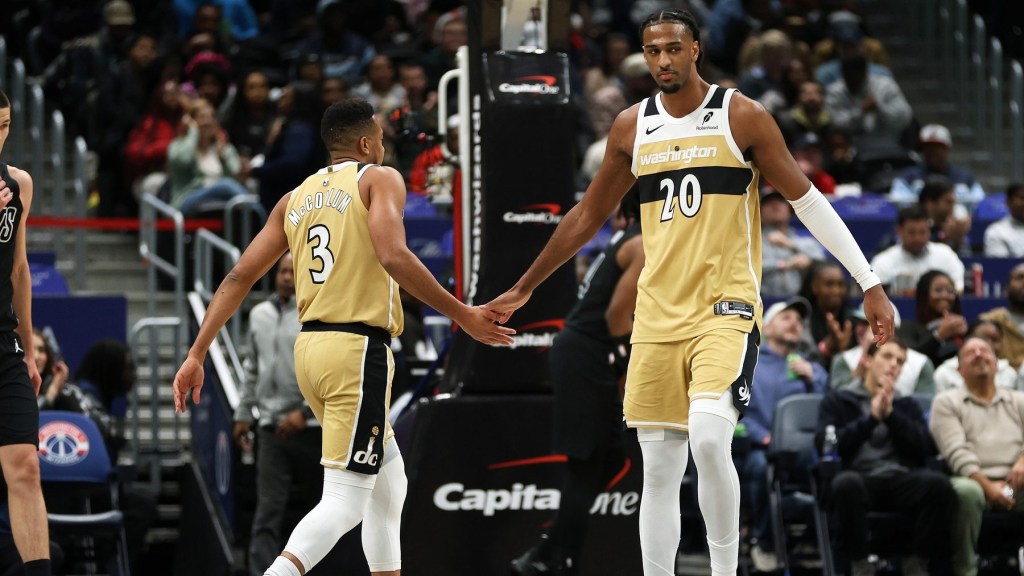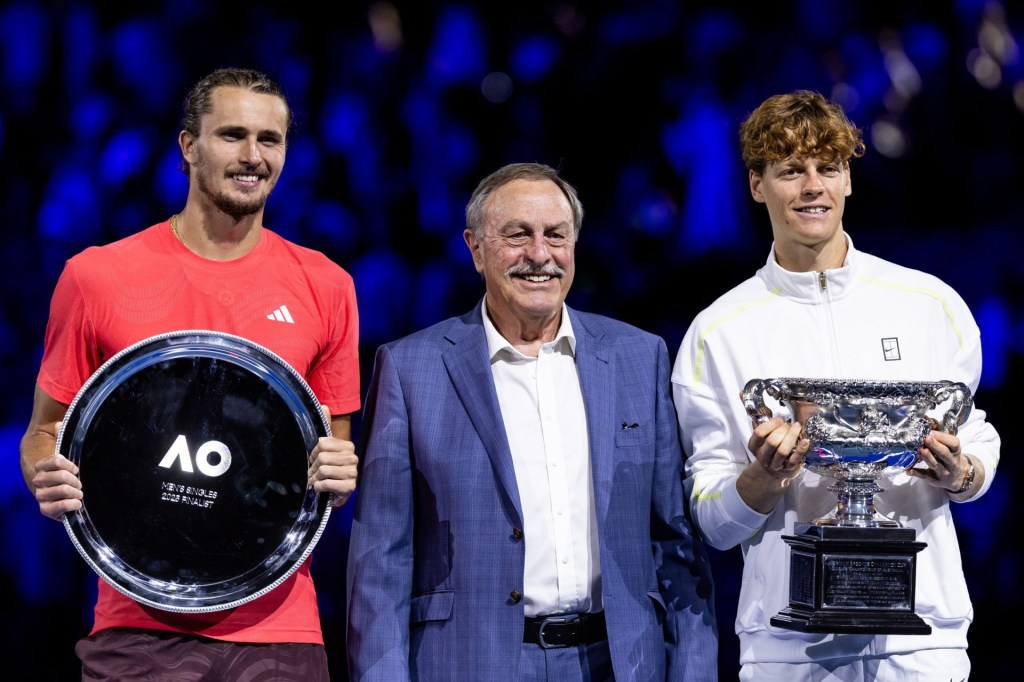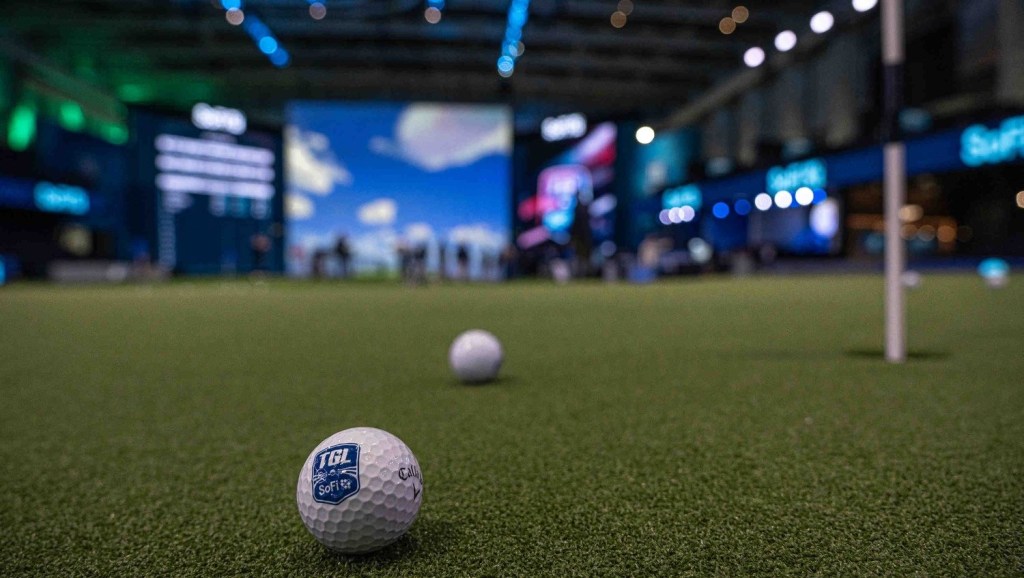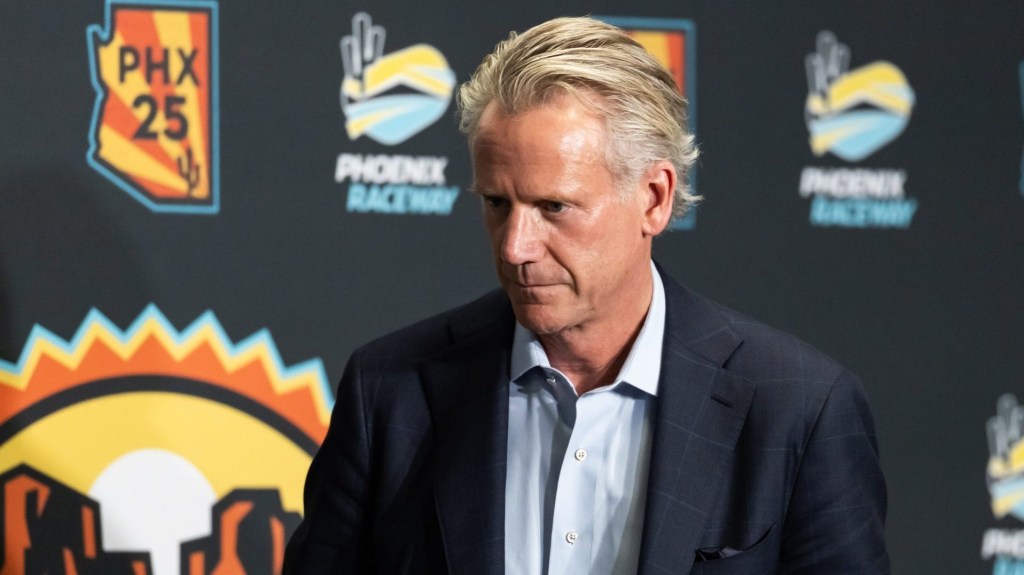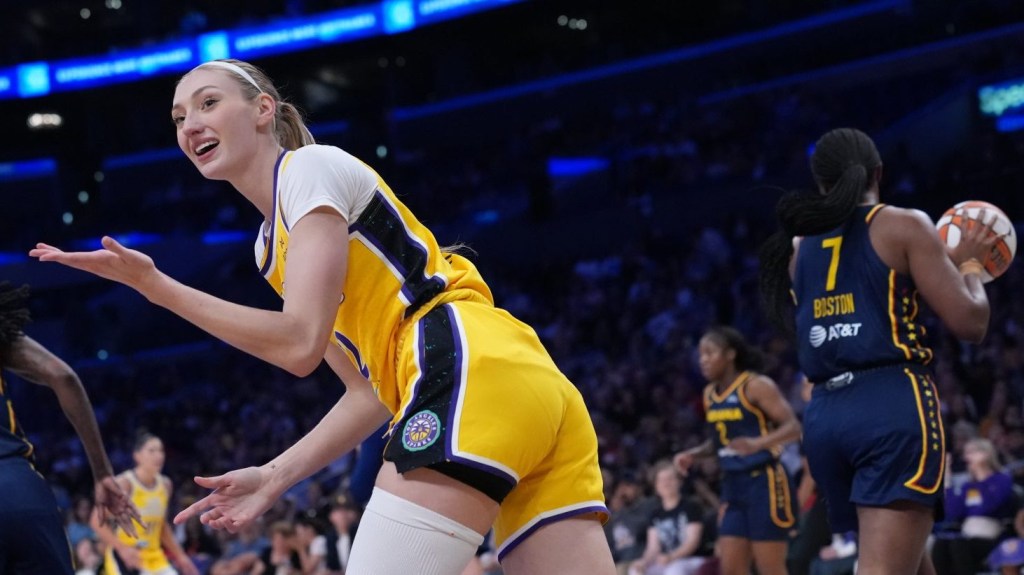On the surface, the NFL owners’ move to give commissioner Roger Goodell a three-year contract extension was a relatively easy, straightforward decision — even if it took months to complete and will reportedly cost in excess of $200 million.
Under Goodell’s 17 years of leadership, the NFL has achieved labor certainty with the NFL Players Association through 2030, enjoys $110 billion worth of stability with its domestic media partners through 2033, has escalated franchise values to unprecedented levels, and has solidified its status as the most dominant sports entity in the U.S.
Goodell has also shown particular strength in protecting team owners from public scrutiny on a wide range of more difficult issues.
“Everyone acknowledges the job that Roger has done. Like Paul Tagliabue, I think Roger will be in the Hall of Fame someday,” said Indianapolis Colts owner Jim Irsay following NFL league meetings this week in New York.
But Goodell’s new contract term, which will carry him to 2027, will see him grapple with a series of issues that will test the NFL’s ability to retain its industry-leading status — offering perhaps the greatest challenges of his tenure.
Media
The NFL is moving from strength to strength — for now.
It’s enjoying its best ratings since 2015 this season, Amazon has begun to approach linear-type audiences for its streaming coverage of “Thursday Night Football,” and YouTube has brought NFL Sunday Ticket subscriptions to a five-year high.
But even as the league is insulated from the issues with regional sports networks afflicting many other major U.S. properties, the NFL remains concerned how ongoing cord-cutting and broader disruption in the media landscape — this summer marked the first-ever month in which broadcast and linear pay television fell below 50% of all TV consumption — could cut into its reach-based business model.
That concern has informed the NFL’s discussions with Disney about a potential equity partnership involving ESPN.
“Almost all of our partners are impacted by the decrease in the pay-TV universe, not just ESPN,” said Brian Rolapp, NFL chief media and business officer. “It’s important for us to work together with our partners to increase reach. I know Amazon and YouTube get a lot of the attention because they’re new partners, but we spend just as much time talking to our current partners about navigating this landscape.”
International Development
The league has generated strong returns from recent games in England and Germany, including record NFL attendance at Tottenham Hotspur Stadium for the Oct. 8 Buffalo-Jacksonville game and a near-instant sellout for the Nov. 5 game between Miami and Kansas City in Frankfurt.
Next up is a potential game next year in either Spain or Brazil, and perhaps an eventual Super Bowl in London and a European division.
As the league accelerates its push to become a truly global business, that effort will partly involve playing more games in places with a less established culture of American football, in turn making the fan-development climb steeper.
“We are looking to reach fans that have never had a NFL regular-season game,” said NFL executive vice president Peter O’Reilly.
Player Health And Safety
The NFL said that it hit a seven-year low in training camp concussions among players and saw a 46% reduction in concussions compared to its three-year average, partly due to the expanded use of Guardian caps that provide additional external cushioning to helmets. Officials are now looking to take that data to encourage further development in helmet technology for game settings.
But now the league has a fast-growing issue with field surfaces. The NFLPA is publicly calling for a league-wide removal of artificial turf after Aaron Rodgers’ season-ending Achilles injury — just four plays into a three-year, $112.5 million contract with the Jets that includes $75 million in guaranteed money.
The NFL has stepped up its research for the performance and impact of various field surfaces and is turning to outside entities such as FIFA for additional help. While the injury debate continues, the NFL is also trying to encourage much greater uniformity for its 30 fields — a highly difficult task given the widely varying climates and stadium designs across the league.
“I think the goal needs to be to limit the number of different surfaces that our clubs play on, so a player has an appreciation when he steps onto the field in one city that it’s going to feel very similar to the surface he steps on in a different city, so it doesn’t feel hard or soft or slick or sticky,” said NFL EVP Jeff Miller.
Ownership Structures
The NFL is also becoming a victim of its own success.
The recent $6.05 billion deal by the Josh Harris-led group to buy the Washington Commanders raises franchise values across the league and makes it harder for even the wealthiest of individuals to gain entry to its ownership ranks.
Because of that, the league has already created a new finance committee to explore the entry to private equity firms and other investment funds — as is the case in other many major U.S. sports — as well as review minimum equity requirements.
The latest response this week was a move to raise the per-term debt ceiling for existing owners by $100 million to $700 million — twice that of five years ago. Incoming owners can now take on $1.2 billion in debt, also up by $100 million.
Diversity
The league currently has just six minority head coaches and ongoing race-related legal issues involving both on- and off-field personnel. After 20 years of implementation and mixed-at-best assessments of its success, the Rooney Rule and its interview mandates for minority and female candidates remains one of the league’s most controversial elements.
The latest move toward equity at this week’s meetings came from a newly approved, one-week shift in the starting date for in-person head coach interviews, which can now begin after the divisional playoff games.
“[Diversity, equity, and inclusion] has received more attention in our owners’ meetings than probably any subject we have been discussing in the last five years,” Goodell said. “I know the [external] focus is on head coaches, we understand that, but we’re focused on the entire league. How do we continue to have diversity be a part of our league and make us better? … I’m probably always frustrated by the pace of progress.”
Succession
Goodell will turn 68 in 2027, and he refuses to say whether this new contract term will be last.
“If I was focused on my legacy, I wouldn’t be standing here in front of you. I wouldn’t have signed this extension,” he said. “I signed a three-year extension, and that’s what I’m going to do, and we’ll see what the future holds.”
That future will undoubtedly involve determining his successor. Names currently garnering attention include Rolapp, O’Reilly, NFL EVP of football operations Troy Vincent, and Chicago Bears president Kevin Warren. Several other internal league executives seen as potential candidates in recent years have ultimately left the league for other positions.
There is also a question of the job itself, and there has been discussion in recent months among league officials and team owners about a potential split of the NFL commissioner position into two roles: one as a CEO for league business, another for on-field matters.
“Whoever you name and how you do it is going to be very important, and obviously, we’re going to want Roger’s feedback when his time comes,” Irsay said.
Those choices of both name and structure will likely end up being one of Goodell’s final and most lasting legacies.
